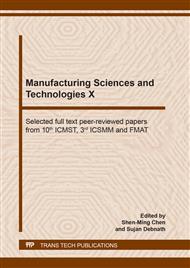p.103
p.111
p.117
p.122
p.129
p.139
p.147
p.154
p.163
Effects of Helium Addition to Ar-Based Shielding Gas on the Lap-Joint Performance of 5052 Aluminum Alloy to Galvanized Steel Sheet during the MIG Weld-Brazing Process
Abstract:
In the metal inert gas (MIG) weld-brazing process, the lap-joint welds between 5052 aluminum alloy and automotive galvanized steel sheet were achieved employing an automatic MIG welding machine. The different percentage of helium (He) gas addition to pure argon (Ar) shielding gas was selected to investigate the performance of lap-joint welds such as appearance of weld bead surface, weld bead geometry, microstructure, tensile strength, fracture surface of welds and thickness of intermetallic compounds (IMCs) layer between the dissimilar materials in the brazing zone. The results showed that the lap-joint welds produced by adding 5% and 10% He gas to Ar shielding gas were provided with better performance of specimens. The average tensile strength of lap-joint welds between 5052 aluminum alloy and automotive galvanized steel sheet is 206.23 MPa. In additions, the amount of porosity in the fusion zone that specimens produced by using 10% He addition to Ar-based shielding gas is less than others. It can be found that the thickness of IMCs layer between the weld bead and automotive galvanized steel sheet from 3.30 μm to 4.90 μm.
Info:
Periodical:
Pages:
129-135
Citation:
Online since:
June 2020
Authors:
Price:
Сopyright:
© 2020 Trans Tech Publications Ltd. All Rights Reserved
Share:
Citation:


